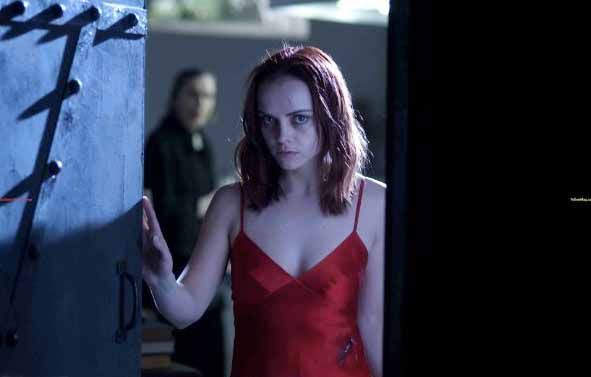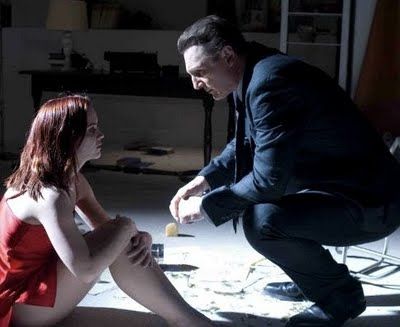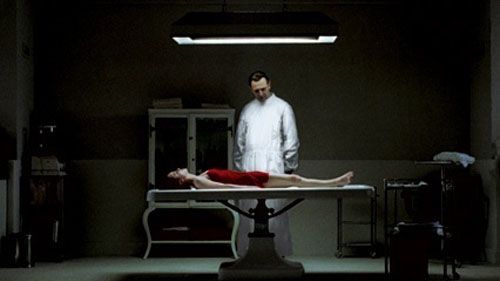15 years after starring in Casper, Christina Ricci has become Casper in After. Life (shout out to Michael Walchalk for the observation). Or has she? Or, hasn’t she? Are you confused, because after viewing the movie multiple times I sure as hell was. I was even more flabbergasted by the abundance of zombie boobies, and the police cop that groped them. Director Agnieszka Wojtowicz-Vosloo’s movie posits some intriguing criticisms of people searching for love and acceptance when its clearly smack in front of their self absorbed eyes. But, like my momma always tells me, it’s not what you say but how you say it. Hit the jump to read my after thoughts on After. Life.
Christina Ricci and Justin Long star as Anna and Paul, a convincingly drab, daft and emotionally dead couple. The viewer is introduced to this couple as they do the horizontal bee bop. Anna is uninterested and distracted, and Paul is frustrated. A misunderstanding and petty fight leads Anna to a funeral home run by Eliot Deacon, played by the gentlemanly Liam Neeson. Neeson’s acting is good as always, and he sublimely presents Deacon as omniscient, angry and unsettling. Though, Ricci, Long and Neeson’s acting isn’t the problem in After. Life, the material that the cast is tasked with managing is the issue.
Eliot Deacon is an off kilter funeral home director who may or may not be a killer. Deacon can’t truly be a killer because the people he interacts with are already dead. So he must have other worldly capabilities that grant him communication with the deceased, but he holds them captive and forces their souls into the hereafter, right? No? Then he was killing people. But how was he killing them, by somehow kidnapping them then tricking them into thinking they were dead and then actually murdering them? Yes I’m asking you, the reader because this facet of Neeson’s character was never fully fleshed out by the time the credits rolled. Vagueness is a nagging flaw that haunts After. Life throughout.
At the outset of After. Life, Anna is leaving the school where she teaches. All of the lights in the hallway she is walking down suddenly and ominously begin to shut off. This is never given context within the confines of the story. Another odd scene was the aforementioned zombie boobie squeeze. Why even include this scene? The character that did the groping was in a few scenes and had no bearing on the story. I understand the need to create tension in a thriller, but it should be crafted organically though storytelling and character interaction, not by cheaply manipulating the audience. At its core, After. Life is a mediation on people so wrapped up in being loved that they take loved ones around them for granted. Sometimes obsessing with the search for love can complicate and ruin the quest. Sometimes obsessing with creating tension and thrills and in a movie can complicate and ruin it too.
After. Life’s special features are scant. Included are a making of feature and commentary with co-writer and director Agnieszka Wojtowicz-Vosloo. The making of isn’t really a making of, but an explanation of After. Life’s convoluted concept. Wotjoowicz-Vosloo is very interesting to listen to in both the making of and commentary and she clears away some of the haze surrounding the movie. Though this doesn’t excuse the clumsy narrative. An explanation of a directors film shouldn’t come through in a special feature, it should be present in the film itself. While After. Life missed more than it hit, I appreciated what the director was aiming for. It can be difficult finding one’s voice when expressing emotions to a significant other, and it can be difficult for a director to convey their voice to an audience.




